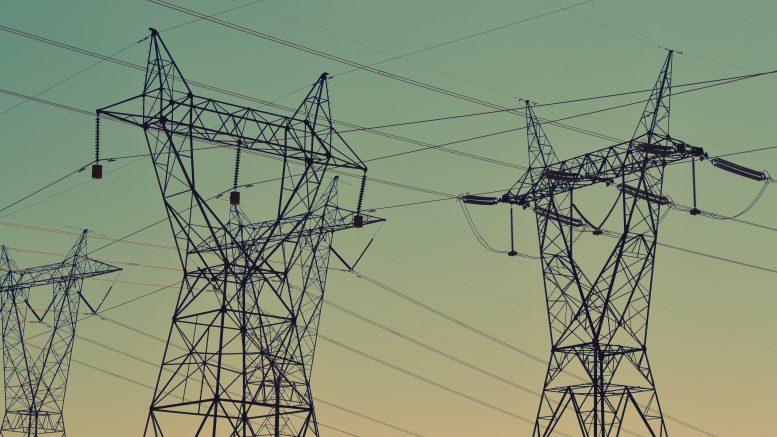In light of the Texas power crisis, utilities and energy providers must respond to a call to action for investing in social impact, sustainability, and corporate responsibility.
![]() With electricity back on in Texas, the spotlight now is on utilities and energy providers to take action and ensure that a crisis of this caliber never happens again. Utility companies and their oversight bodies have acknowledged a general lack of readiness for such adverse weather events. Accordingly, they have pledged to regain the trust of the customers and businesses they serve. Regaining the public’s trust requires a closer look into the resilience of power generation and energy source diversification, but notably this crisis has unveiled a broader trend – environmental, social, and governance (ESG) responsibilities are a necessary core business function.
With electricity back on in Texas, the spotlight now is on utilities and energy providers to take action and ensure that a crisis of this caliber never happens again. Utility companies and their oversight bodies have acknowledged a general lack of readiness for such adverse weather events. Accordingly, they have pledged to regain the trust of the customers and businesses they serve. Regaining the public’s trust requires a closer look into the resilience of power generation and energy source diversification, but notably this crisis has unveiled a broader trend – environmental, social, and governance (ESG) responsibilities are a necessary core business function.
Even before the power crisis, the utility markets had already begun to favor companies that showed ESG leadership. NextEra Energy and the AES Corporation, for instance, have announced and acted on high profile ESG commitments which tie into their respective financial strengths in the market. Both companies have significantly outpaced the utility industry’s growth over the last two years.
Resiliency against potential grid and power supply disruptions has always been a core business function of utilities. In light of this event, utilities now have a clear responsibility to invest in ESG activities to not only better the communities they serve, but also to protect their core business and long-term growth.
Today, customers are increasingly purpose-driven, and this desire for social impact translates to their buying habits. ESG refers to how a company manages its non-financial risks and maximizes its involvement in each of those three dimensions. It is a holistic approach for creating social good, improving customer experiences, establishing industry leadership, and driving shareholder value.
Historically, ESG factors represented a wide spectrum of issues not part of traditional financial analyses yet may impact the bottom line; however, recent trends suggest otherwise. ESG factors are increasingly relevant to core business functions. Companies with higher ESG ratings are proving that, in many cases, they are better equipped to weather the storm (pun intended).
With climate change adding new challenges in the form of both extreme heat and polar vortex events, these severe weather events put new strains on utility infrastructure. Demand for heating and cooling increases, making grid planning and resource allocation more difficult.
Once seen as “nice to have” for utilities, investing in ESG is a necessity, and making it a core business improves customer experiences, establish industry leadership, and drives growth for shareholders. Major utility companies like NextEra Energy and the AES Corporation are already channeling ESG and commercial innovation investments into renewable energy, smart grids, electric vehicle commercialization, community & customer engagement, and workforce development initiatives. Each of these areas represent examples of what is considered essential in creating successful and well-received ESG and commercial innovation strategies. ESG strategy execution has a key positive correlation with shareholder returns. For utilities, this imperative is particularly critical.
Conversely, public relations mishaps can be devastating for utilities. These instances can be perceived as “ESG failures” and are characterized by a company’s lack of readiness for environmental, social, and governance events that adversely impact its business. This was seen with PG&E in the California wildfire crisis and again is shaping up for some utilities and energy providers unable to sufficiently respond to the Texas power crisis. The integration of ESG as a core business function should accordingly serve as a framework for preventing such public relations failures.
Compounded with legislative pressure from the state as well as from Washington, utilities are under pressure to maximize federal energy infrastructure investments as we strive for more resiliency amidst the devastating impacts of the climate crisis.
The grid vulnerabilities exposed by the crisis have further given President Biden’s push for clean infrastructure investment, namely “better transmission systems and battery storage that would make the system more resilient amid extreme weather spurred by climate change.” By tailoring ESG strategies to the issues that are most critical to the communities they serve, utilities can create high-impact, positive change for communities while protecting their core business interests.
The rapidly changing nature of ESG has resulted in fragmented definitions and metrics, challenging the ability to standardize and compare practices. This standardization challenge complicates the ability of not only utilities, but also commercial companies as a whole, to leverage ESG to satisfy its corporate and community interests. While several standardized rankings such as the Dow Jones Sustainability Indices, ISS ESG, CDP, MSCI ESG ratings, S&P Global ESG Evaluations, B Corp, and Morningstar/Sustainalytics have emerged in this process, each utilizes different inputs and scales to rate ESG performance.
With no single standard that can be used to compare the ESG practices of companies, there is no clear understanding of which approach is most credible and effective. Every company can have a ESG strategy, but how can the market determine which companies are ESG leaders? In this sense, ESG should be seen as a north star for companies as they strive to improve themselves and the communities they serve. For utilities in the near-term, this means ensuring that all those still struggling with the aftermath of the power crisis get the service and support they need. With a long-term focus, ESG implementation could take the form of workforce development, transportation electrification preparedness, or carbon offsetting.
Current market trends are already signaling that those fully committed to executing on ESG commitments will emerge as market leaders. Since there is no single standard for defining, measuring, and implementing ESG for now, every company has the opportunity to pave its own future with this corporate responsibility principle as a north star.
Over 2021 we can expect to see see more campaigns from utilities focusing on how they have invested in ESG. In light of the power crisis and the broader call to improve the nation’s gird and infrastructure, utilities have the opportunity to build trust among customers and shareholders alike. The financial strength of these companies will further establish ESG as a core business practice. Along the way, we will need to answer the complex questions of how we standardize and measure ESG, as well as how we can link the financial value of such practices in consideration of them as core business practices.
It is already clear that the utilities not waiting to invest in ESG are emerging as long-term market leaders, despite the standardization challenges ESG presents. On the flipside, those that wait to act until there is a clear glidepath for ESG are at best missing value generating opportunities and at worst positioning themselves for disruption.
–
Authors: Ryan P. Martin, Principal, LDR Advisory Partners; Jan P. Maceczek, Associate, LDR Advisory Partners



Be the first to comment on "ESG must now be a utility company’s core business responsibility"